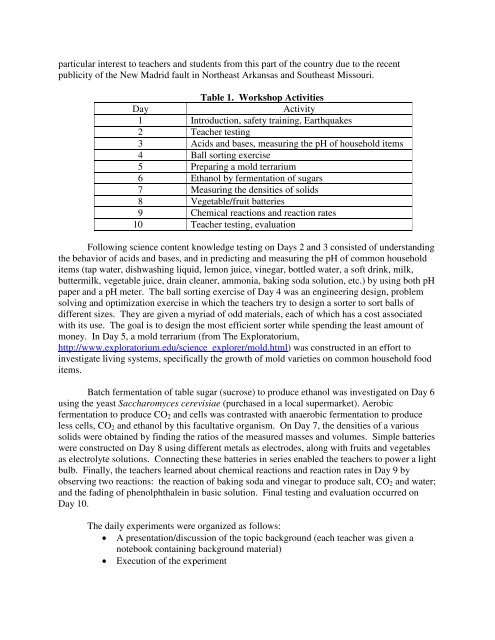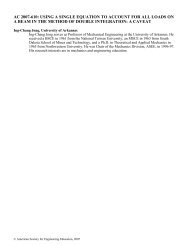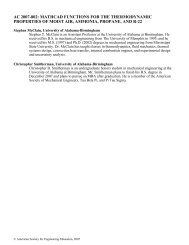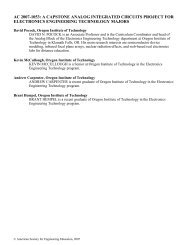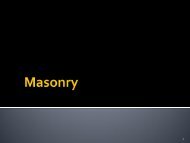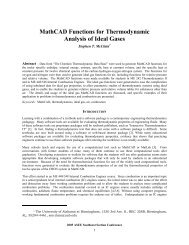AC 2007-514: UNIVERSITY OF ARKANSAS SCIENCE ...
AC 2007-514: UNIVERSITY OF ARKANSAS SCIENCE ...
AC 2007-514: UNIVERSITY OF ARKANSAS SCIENCE ...
You also want an ePaper? Increase the reach of your titles
YUMPU automatically turns print PDFs into web optimized ePapers that Google loves.
particular interest to teachers and students from this part of the country due to the recent<br />
publicity of the New Madrid fault in Northeast Arkansas and Southeast Missouri.<br />
Table 1. Workshop Activities<br />
Day Activity<br />
1 Introduction, safety training, Earthquakes<br />
2 Teacher testing<br />
3 Acids and bases, measuring the pH of household items<br />
4 Ball sorting exercise<br />
5 Preparing a mold terrarium<br />
6 Ethanol by fermentation of sugars<br />
7 Measuring the densities of solids<br />
8 Vegetable/fruit batteries<br />
9 Chemical reactions and reaction rates<br />
10 Teacher testing, evaluation<br />
Following science content knowledge testing on Days 2 and 3 consisted of understanding<br />
the behavior of acids and bases, and in predicting and measuring the pH of common household<br />
items (tap water, dishwashing liquid, lemon juice, vinegar, bottled water, a soft drink, milk,<br />
buttermilk, vegetable juice, drain cleaner, ammonia, baking soda solution, etc.) by using both pH<br />
paper and a pH meter. The ball sorting exercise of Day 4 was an engineering design, problem<br />
solving and optimization exercise in which the teachers try to design a sorter to sort balls of<br />
different sizes. They are given a myriad of odd materials, each of which has a cost associated<br />
with its use. The goal is to design the most efficient sorter while spending the least amount of<br />
money. In Day 5, a mold terrarium (from The Exploratorium,<br />
http://www.exploratorium.edu/science_explorer/mold.html) was constructed in an effort to<br />
investigate living systems, specifically the growth of mold varieties on common household food<br />
items.<br />
Batch fermentation of table sugar (sucrose) to produce ethanol was investigated on Day 6<br />
using the yeast Saccharomyces cerevisiae (purchased in a local supermarket). Aerobic<br />
fermentation to produce CO2 and cells was contrasted with anaerobic fermentation to produce<br />
less cells, CO2 and ethanol by this facultative organism. On Day 7, the densities of a various<br />
solids were obtained by finding the ratios of the measured masses and volumes. Simple batteries<br />
were constructed on Day 8 using different metals as electrodes, along with fruits and vegetables<br />
as electrolyte solutions. Connecting these batteries in series enabled the teachers to power a light<br />
bulb. Finally, the teachers learned about chemical reactions and reaction rates in Day 9 by<br />
observing two reactions: the reaction of baking soda and vinegar to produce salt, CO2 and water;<br />
and the fading of phenolphthalein in basic solution. Final testing and evaluation occurred on<br />
Day 10.<br />
The daily experiments were organized as follows:<br />
• A presentation/discussion of the topic background (each teacher was given a<br />
notebook containing background material)<br />
• Execution of the experiment


